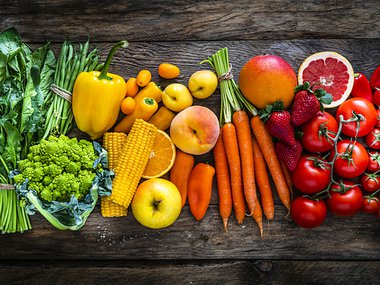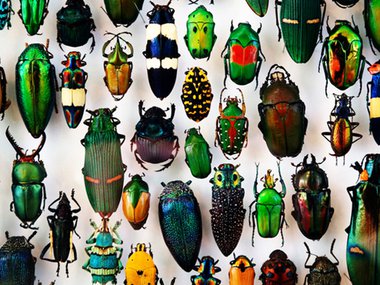Question Your World: How Can We Make Plants More Efficient?
Genetic modification has certainly been a controversial issue due to the many ethical decisions involved. GMOs and CRISPR are two examples of genetic engineering that have received a lot of front page news, but genetic engineering has been happening for a long time and often with remarkable results. Recently scientists worked on a new way to engineer plants to be more productive and spend less energy while cleaning up occasional cellular messes. How can we make plants more efficient?
Alright, let’s make a quick trip back to our elementary school memories. No, we’re not talking about cafeteria food. Let’s chat about photosynthesis.
As you may recall, this is the process by which a plant’s cellular powerhouse, chlorophyll, converts sunlight into the energy needed to grow and perform vital life functions. Energy from sunlight and existing carbon dioxide molecules and water molecules are converted into a simple sugar and, of course, oxygen is released as a byproduct.
However, about 20% of the time, the plant retains extra oxygen instead, in a process called photorespiration. This actually causes a lot of extra work for the plant. After photorespiration, a lot of cellular work is required to eventually get that extra oxygen out, resulting in lower productivity for the plant. In fact, scientists are saying that the plants in the Midwest alone could produce food for an additional 200 million people if photorespiration were not an issue.

Enter RIPE, no not like a ripe grape, but an acronym for Realizing Increased Photosynthetic Efficiency, a landmark study and an international research project to engineer crops at a genetic level to expedite the oxygen removal from photorespiration. Essentially they have made the pathway by which the cell removes the extra oxygen much smaller, thus far fewer energy resources are diverted to this clean-up process. Without this intensive oxygen clean-up process, the genetically modified plants were quite productive. These newly engineered cellular pathways increased the plant’s efficiency by 40%, creating far more biomass than their un-modified counterparts.
This initial test was done on tobacco, but now these researchers are seeing if this new modification works on soybean, cowpea, rice, potato, eggplant, and tomato plants. Increasing their biomass would mean bulkier, increased flower and fruit yield. Enhancing food production in places with low yielding or failing crops would be a game changer for the people in that region.
Here’s the kicker - photorespiration is more common in warmer environments. A global community of scientists know that human emissions of heat trapping gases have been rapidly warming up the planet. As the planet continues to warm, the impacts of photorespiration could become a bigger and bigger problem for agriculture and ultimately our Earth’s crop production. This study could very well lead to new ways of becoming resilient to the impacts of climate change.
There you go, as we learned in elementary school, photosynthesis is very important and this study could very well impact our planet’s food, including cafeteria food.


